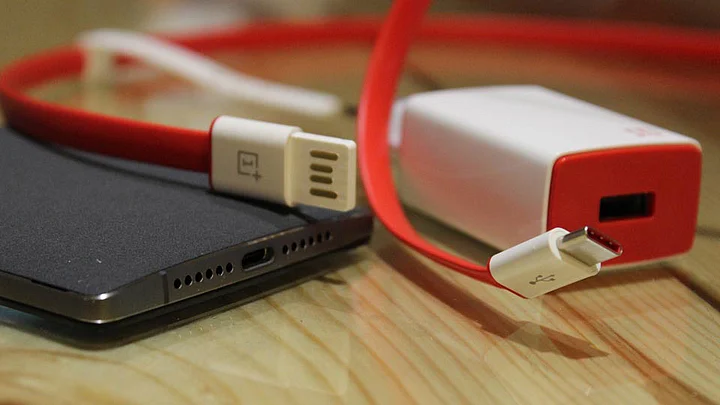Look around your home or office, and chances are you’ll find at least half a dozen devices that use USB (Universal Serial Bus) cables. From full-size USB to miniUSB, microUSB and a few variants in between, the USB standard has served us well for over two decades, but with time, USB has become a little long in the tooth and started to trail behind newer standards such as Thunderbolt.
Enter the USB-C – a new standard which will allow PC and smartphone-makers to turn the corner on port design and capabilities in their next generation products. With the new Apple MacBook and the OnePlus 2, we’ve had our first look at the next gen standard to deconstruct what the fuss around this tiny little port is all about.
What is USB-C?
In a nutshell, USB-C is a new standard for charging and data transfer between phones, tablets, laptops and someday TVs that will do away with the existing USB ports (mini, micro, full-sized) altogether.
The first obvious benefit of the new port is that it’s reversible – there is no right way to plug a USB-C cable into the port – much like the iPhone lightning cable. No more cursing under your breath when you try to plug your phone into the bedside charger and it doesn’t go in the right way the first time!
Surely, Reversibility Can’t Be its Only Benefit?
Not at all! USB-C is meant to describe the plug shape, but the other key benefit is that it is compatible with the USB 3.1 specs, which allows for faster data transfer of up to 10Gbps – that’s twice as fast as the current USB 3.0! Even when you’re simply using it to charge your device, USB-C delivers power at up to 100 watts at 20V, which not only means that smartphones can be charged more than twice as fast (than conventional 2.1Amp chargers), but it can be used to power larger devices such as laptops and monitors, directly from USB!
Say goodbye to bulky AC adapters, say hello to thinner and lighter laptops with USB-C ports! The real clincher is two-way power transfer, which means that if you have two USB-C compatible smartphones, you can use one to charge the other.
Not quite yet though – devices can’t share power with other devices until Android M, which adds full support for USB-C and USB 3.1, arrives later this year.
Is That it? Power and Data?
With so much data carrying capability on tap, USB-C supports a ton of existing standards, such as DisplayPort, HDMI and VGA for pushing video/audio, apart from Ethernet for wired network connectivity. All via one port.
Wow! How Soon Can I See USB-C on All My Devices?
Right now, USB-C is available only on the Apple Macbook and the OnePlus 2, apart from LeTV’s Le Max superphone, Nokia’s N1 tablet and the latest Chromebook Pixel. The next Nexus devices are slated to have USB-C ports as well, and Samsung might take a leap of faith and go with the new standard in the next wave of Galaxy devices, due later this week.
Given its benefits, we expect widespread adoption in Android flagships in the next 6-9 months. On the PC side, Intel’s latest Thunderbolt 3 port will piggyback on the Type C connector, giving it full reversibility and some degree of interoperability. Remember, Thunderbolt is a heck of a lot faster (nearly four times as fast) than the USB 3.1 standard on which USB-C is built.
Damn! Does That Mean All My Accessories and Cables are Redundant?
Relax. Not only will the market soon be flooded with Type-C adapters to make your old wired gear work with new USB-C devices, but Type C USB is also fully backward compatible with USB 3.0 and 2.0 devices, just that it will work at slower speeds. Over time, USB-C truly will become that one cable to rule them all.
